In this weeks blog, I give a run-down of our trip to Beaconsfield, and particularly the Beaconsfield Mine and Heritage Centre, and our after-lunch visit to the Platypus House and Echidna Garden at Beauty Point, just down the road.
Beaconsfield
Beaconsfield is a town about 40km north from Launceston. In the mid-19th century gold was discovered there, and a small alluvial gold rush occurred nearby in 1986. In 1877 the cap of the underground gold reef was discovered and underground mining operations commenced. The Tasmania Mine was born. Grubb and Hart saw the possibilities of the mine and bought it less than a year later.
Gold mining history
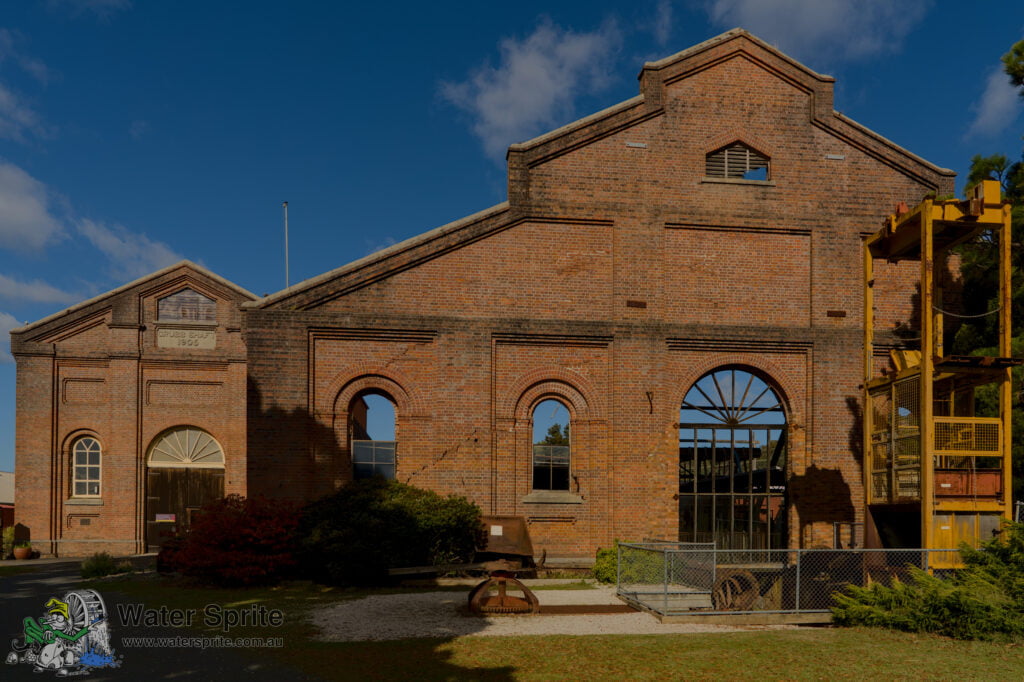
Sony A7Riv with Sony FE 24-70mm F2.8 GM II lens @24mm. 1/400s, f/10.0, 100 ISO.
Signage in the historical centre indicates that there were originally several mining companies working the gold deposit. They all faced problems with flooding of their shafts, and co-operated in the installation of pumping facilities. Maps in the Historic Centre indicate that there were a dozen or more shafts located around the town, mostly on the western side. Google maps shows very little evidence of these shafts today, with housing on some of the supposed sites. Over time, the Tasmania Mine acquired the other mines.
Early in the 20th century, to improve access and assist with pumping to deal with the persistent water problems, two shafts were sunk close to each other on the western side of the town. These are the Hart and Grub shafts, and they were accompanied by quite substantial brick buildings to house the boilers (everything was steam powered) and machinery necessary to run the mine.
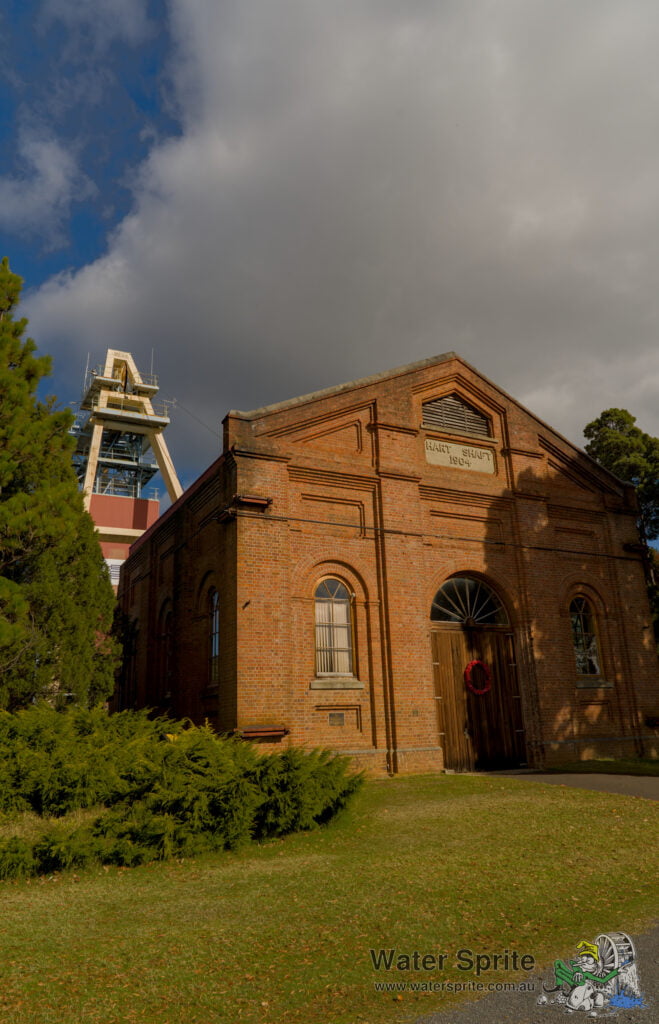
Sony A7Riv with Sony FE 24-70mm F2.8 GM II lens @ 24mm. 1/320s, f/10.0, 100 ISO.
Both shafts ran to a bit over 400m deep by the time the mine closed in 1914. Unfortunately the Grubb shaft had been constructed in unstable ground, and the top of the shaft was unable to support the heavy headframe necessary if that shaft was to be used for lifting and access. As a result, the Grub shaft was used exclusively for pumping operations, with the Hart shaft being the main access and ore removal shaft (but also having pumps). The top of the Grubb shaft collapsed in the 1920’s after the mine had closed, taking significant parts of the adjacent building with it.
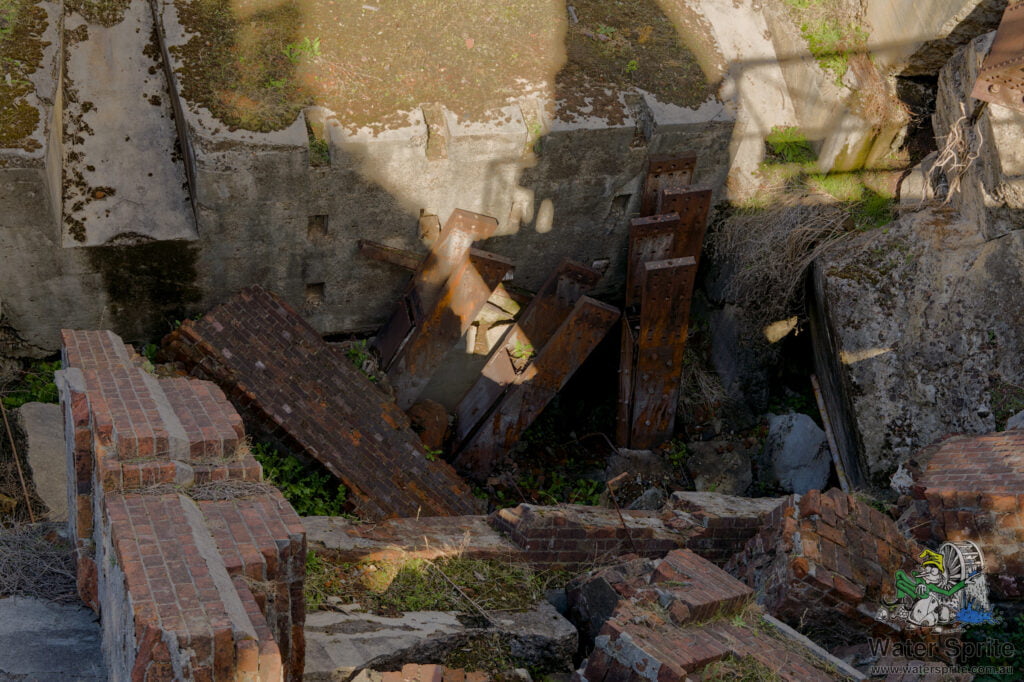
Sony A7Riv with Sony FE 24-70mm F2.8 GM II lens @ 40mm. 1/40s, f/10.0, 100 ISO.
Closing – and reopening again
The original mining operations ceased in 1914 for financial reasons, including a need to replace the pumping equipment and the apparent problems with the Grubb shaft. At that stage, the mine pumps were capable of removing up to 36 million litres of water a day – that’s 25,000 litres per minute! The pumps were located at intervals down the shaft, and pumped water up in 150m increments. A total of three pumps were required to lift the water from the bottom of the shaft. Motive power for the pumps was driven entirely by steam engines on the surface, which moved large (and very heavy) pump rods up and down to drive the pumps underneath. Several of these rods are still visible sticking up through the rubble in the collapsed Grubb shaft. Further examples that were retrieved from the Hart shaft when it recommenced operation can be seen in the mine yard.
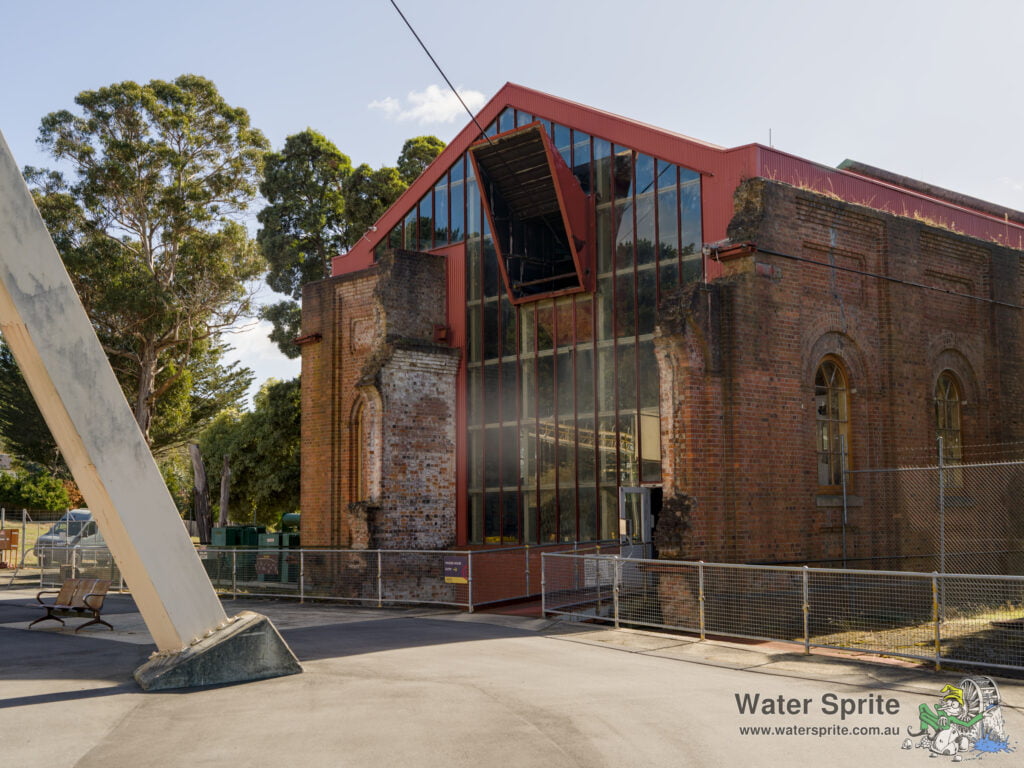
Sony A7Riv with Sony FE 24-70mm F2.8 GM II lens @ 40mm. 1/60s, f/10.0, 100 ISO.
Despite closing in 1914, there was continued interest in the mine, and assessments were done every couple of decades or so to see if it was viable to reopen the mine. In the 1980’s this became serious, and work commenced to refurbish and strengthen the Hart shaft to regain access to the mine. This paused again, briefly, until the mid-1990’s. Mining production commenced again in 1998 and ran until 2012 when it was again deemed unviable. By that stage the working ore faces were 1.2km underground.
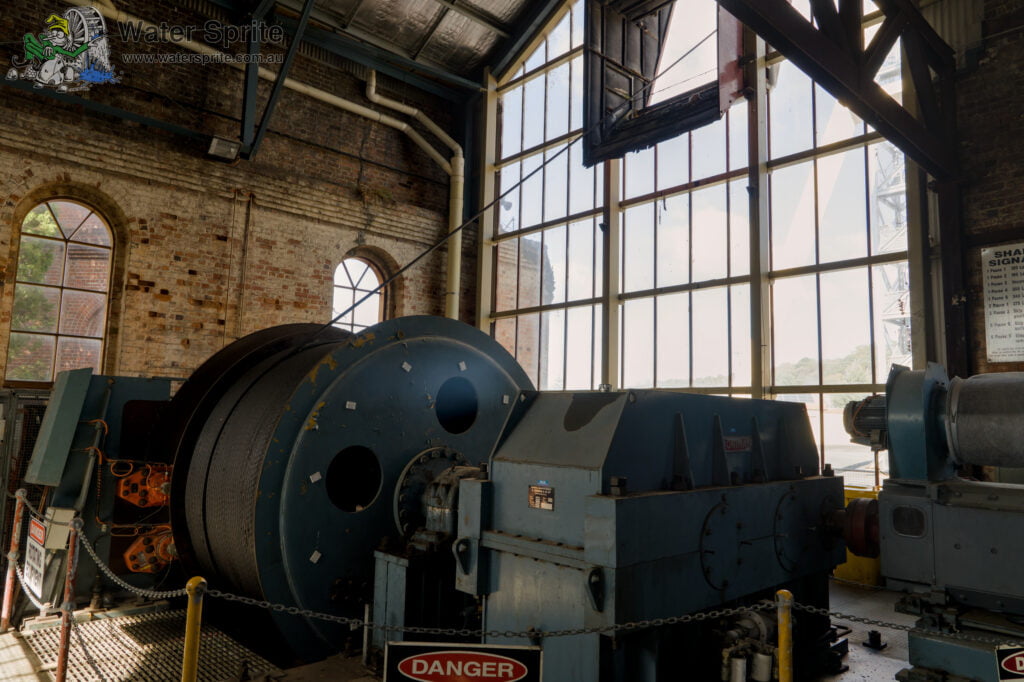
Sony A7Riv with Sony FE 24-70mm F2.8 GM II lens @ 24mm. 1/30s, f/10.0, 250 ISO.
The Heritage and Mine Centre
After the mine closed, the derelict buildings became tourist attractions. Their grand size and architecture was appreciated. In the 1980’s, the Grubb engine house and boiler house ruins were donated to the local historical society by the Beaconsfield Gold Mine, which owned the site, and the museum was constructed within these ruins, and in an adjacent purpose built building. The Hart shaft part of the complex remained with the mining company as they were planning to reopen the mine. A few years after mining operations ceased again in 2012, visitors to the centre were allowed access to the mine yard and surroundings of the Hart Shaft.
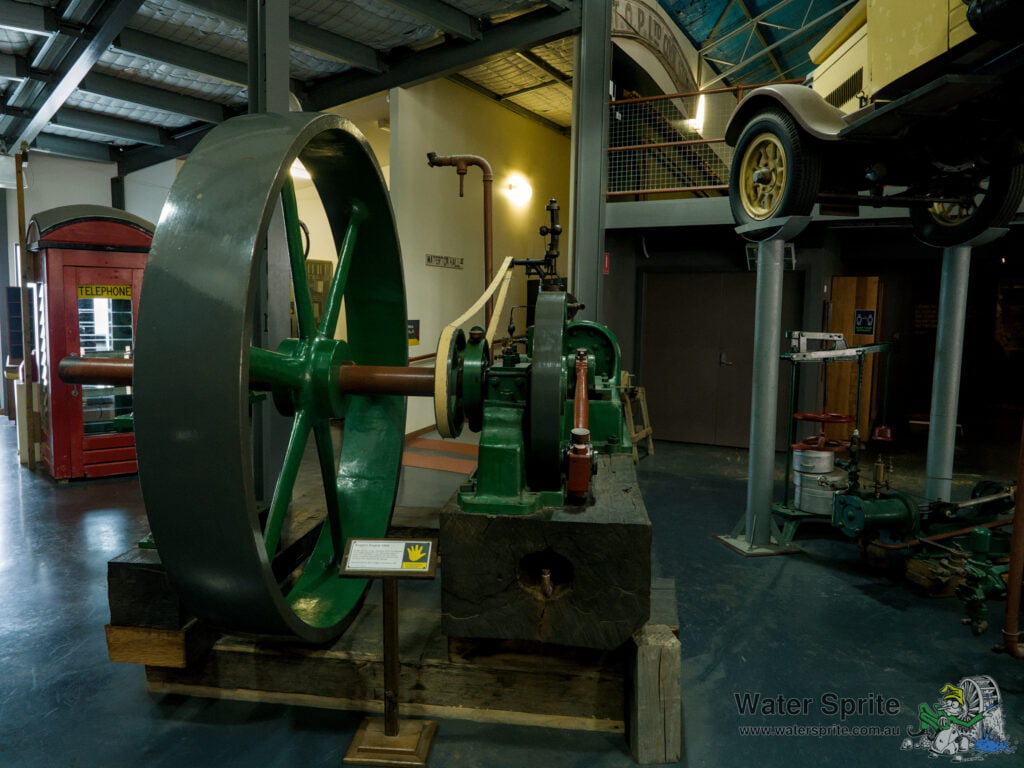
Sony A7Riv with Sony FE 24-70mm F2.8 GM II lens @ 24mm. 1/30s, f/10.0, 5000 ISO.
The museum includes exhibitions on a variety of subjects of local interest, not just the mine complex. To be honest, we were mostly there to see the mine and didn’t spend a great deal of time looking through the heritage centre. There are interesting things there, including operating analog telephone systems that kids can play with, information on the mine rescue operation (see Beaconsfield mine collapse), and more. It is well worth the visit.
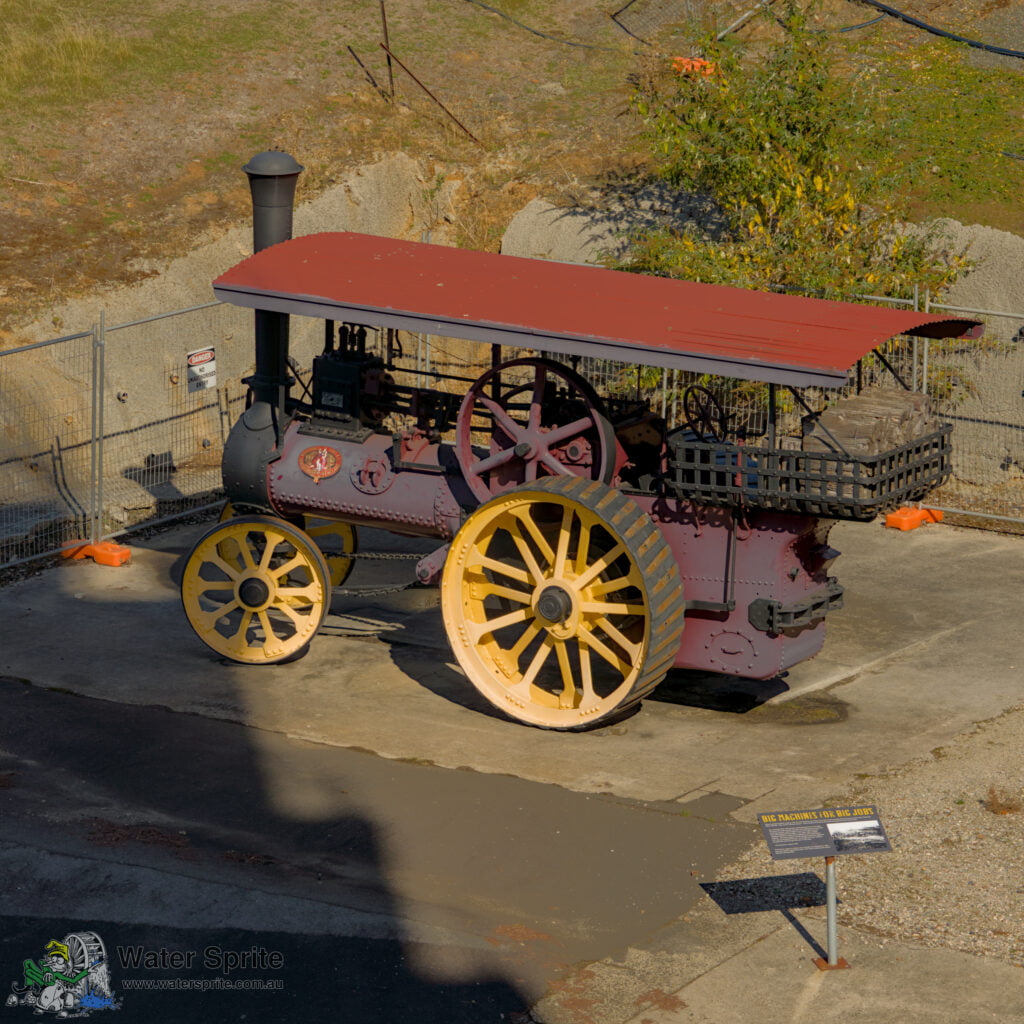
Sony A7Riv with Sony FE 24-70mm F2.8 GM II lens @ 70mm. 1/200s, f/10.0, 100 ISO.
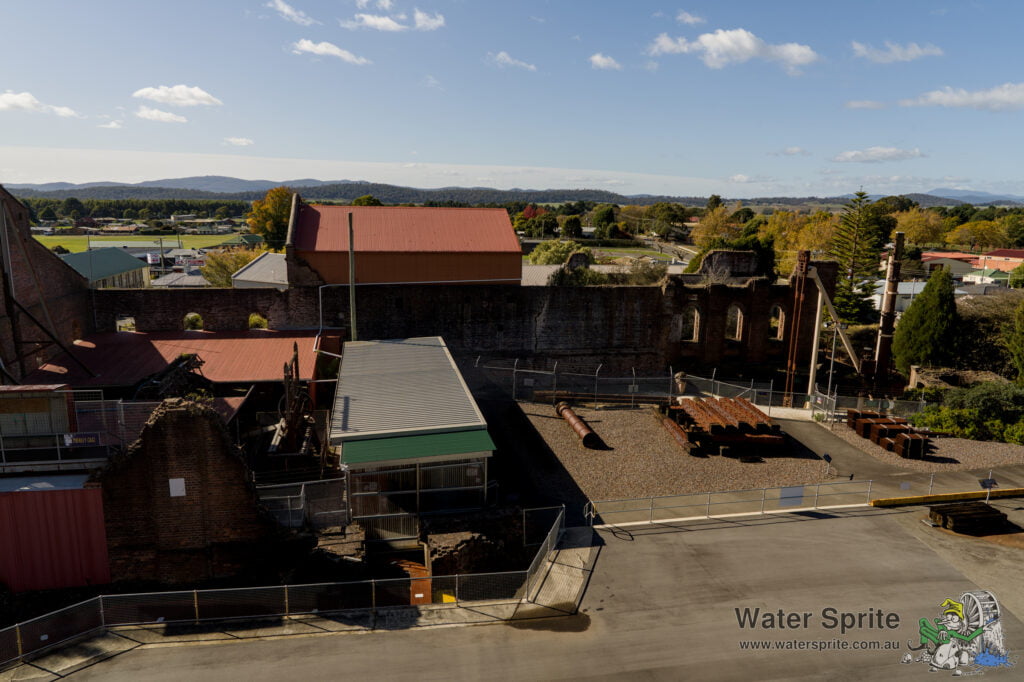
Sony A7Riv with Sony FE 24-70mm F2.8 GM II lens @ 24mm. 1/125s, f/10.0, 100 ISO.
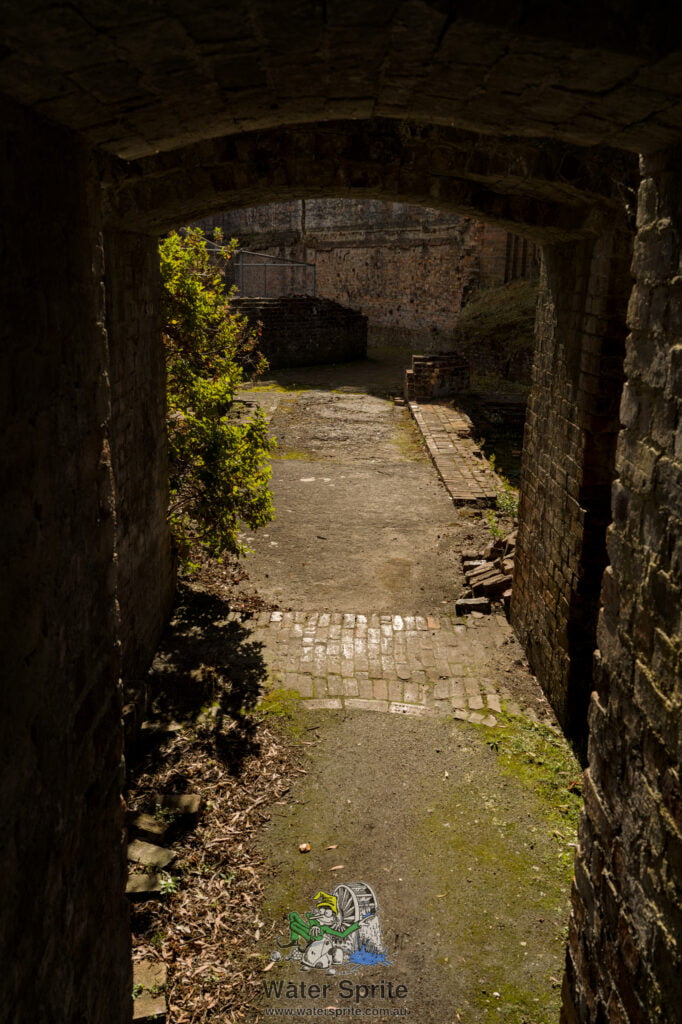
Sony A7Riv with Sony FE 24-70mm F2.8 GM II lens @ 32mm. 1/125s, f/10.0, 100 ISO.
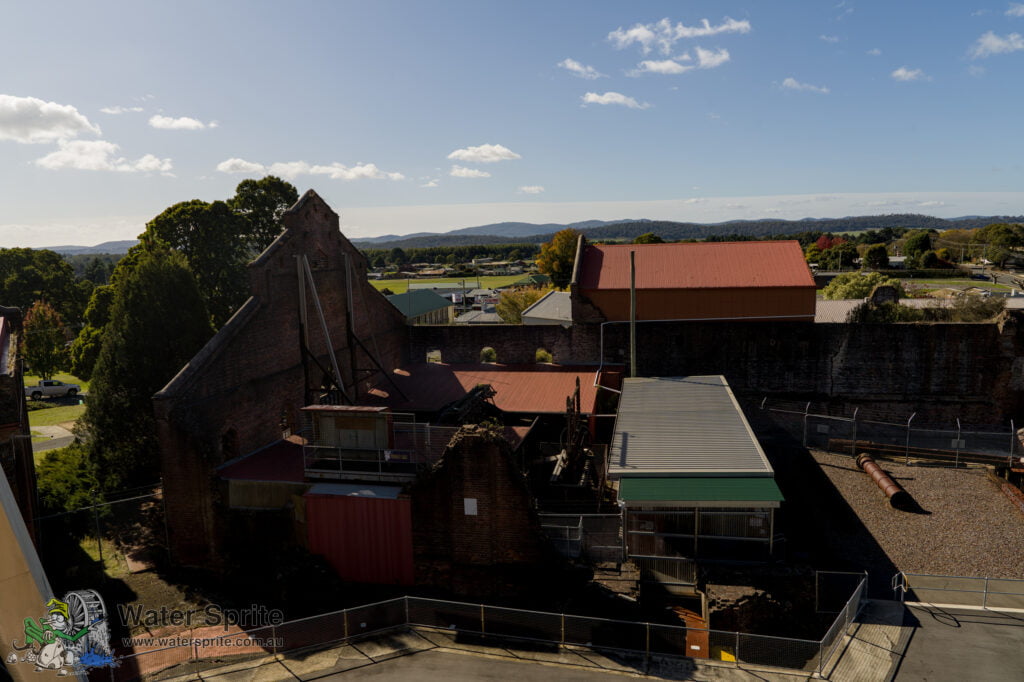
Sony A7Riv with Sony FE 24-70mm F2.8 GM II lens @ 70mm. 1/200s, f/10.0, 100 ISO.
Links
- Beaconsfield Mine and Heritage Centre (website)
- Companion to Tasmanian History entry on the Beaconsfield Mine, University of Tasmania.
Platypus House and Echidna Garden
After lunch in Beaconsfield, we wandered down to Beauty Point, where the Platypus House and Seahorse World are almost adjacent to each other. We were only going to visit one of the two, but it gave my daughter an opportunity to decide which one. She chose the Platypus house.
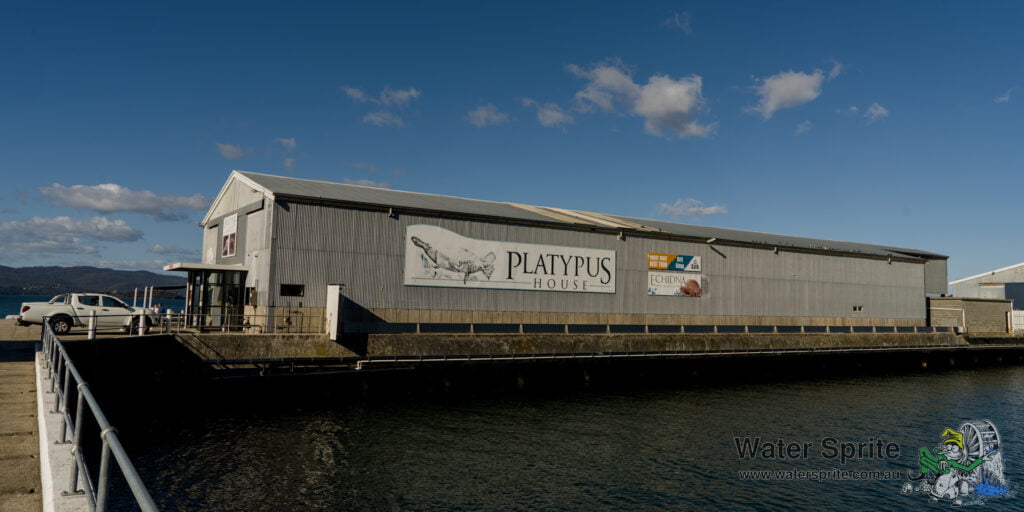
You only get to see the animals if you go on a tour. There are no animals visible without the tour. Their gift shop has some good Australian native-themed gifts, however. They also have a very basic food service – but nothing gluten free as far as I recall. We’d eaten before we got there, so that wasn’t a problem.
Do not expect to handle the animals. The platypuses are all in their tanks and cannot be touched. The echidna’s roam free in their room and they may come up to you, but it is not guaranteed and handling is not permitted if they do. I had one that spend several minutes sniffing my shoes. Sadly I was too close and couldn’t get the camera to focus that closely with the lens I had on it at the time.
Platypus
There are four (if I remember correctly) resident platypuses. They have a large pool and several smaller “rooms” that are all interconnected. I don’t remember their names and couldn’t identify who was whom in the photos even if I did, so I’ll just present the photos. The in water parts of their body look disproportionate in the photos as the water has a magnifying effect.




Echidna
Again, I don’t remember the echidna names, but I couldn’t identify them from their photos anyway. I do recall that a couple of the echidnas had what might be considered to be misgendered names. The story goes that you cannot (without medical intervention) identify the gender of an echidna until they are about a year old. Echidna’s on display tend to be given names, and they do (apparently) learn their names, so once you’ve given them a name it’s permanent even if it is misgendered.
Once again there were four echidnas. This is coincidence. It is four because they recently discovered that they had a baby echidna. And a very cute baby it is, too!




Links
Disclaimer
We attended the establishments and locations mentioned in this post as full fee-paying guests. Our hosts were not advised that we are semi-professional photographers or bloggers before or during our visit. It is our understanding that the tours and information we received were as normally provided to any member of the public.
The views expressed in this post are mine and mine alone, and any errors in it are also all mine. Any recommendations made in this post are unpaid and are based entirely on my experiences during my visit. Your experience may differ, and I cannot be responsible for that.
I can find no statement of the Beaconsfield Mine and Heritage Centre photography policy. In accordance with standard Museum practice, I assume it is to permit photographs for personal use only. I will not sell these images without the express permission of the Museum (and if they approve, they will get a financial benefit from any sales).
Platypus House encourage photography for non-commercial use, and encourage the sharing of photographs with them on their social media pages. These images are provided for your enjoyment and education only and are not for sale without the express prior permission of Platypus House.
Leave a Reply